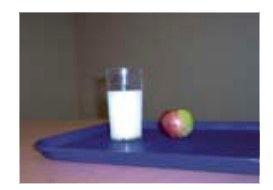B1.4 Represent fractions from halves to tenths using drawings, tools, and standard fractional notation, and explain the meanings of the denominator and the numerator.
Activity 1: From Smallest to Largest
Relationship Skills
Make connections between the number of equal parts being considered (numerator) and the number of equal parts into which the whole is divided (denominator).
Directions
Hand out a random list of unit fractions (for example, \(\frac{1}{2}\), \(\frac{1}{4}\), \(\frac{1}{5}\), \(\frac{1}{7}\), \(\frac{1}{8}\), \(\frac{1}{9}\), and \(\frac{1}{10}\).
Have students place them in ascending order using manipulatives.
Ask them to explain their sequence and justify it.
Note: Represent these fractions with concrete materials by using all four models: linear model, area model, volume model and set model. It is important for students to know what each fraction represents based on the models and to be able to tell which fraction is greater.
Intervention
Circulate and ask questions such as:
- Which fraction is larger? Smaller? How do you know?
- What does each number in a fraction represent?
- What is different between the objects you used to represent your fractions and those of others? What is the same?
Source: translated from Guide d'enseignement efficace des mathématiques de la 1re à la 3e année, Numération et sens du nombre, p. 68-69.
Activity 2: Let's Take Pictures of Fractions
Give students various statements of situations where fractions are used and ask them to represent them.
Examples
I swam three fourths (\(\frac{3}{4}\)) of the way across the lake before I felt tired.

I drank a third (\(\frac{1}{3}\)) of my glass of milk.

Examples of possible statements include:
- I crossed three fifths (\(\frac{3}{5}\)) of the soccer field.
- Nine tenths (\(\frac{9}{{10}}\)) of the pencils in my bag are coloured.
- Two thirds (\(\frac{2}{3}\)) of the dozen donuts are chocolate.
- The child has not eaten even a third (\(\frac{1}{3}\)) of the food on his plate.
- My brother is two thirds (\(\frac{2}{3}\)) my size.
- I climbed the five eighths (\(\frac{5}{8}\)) of the ladder.
- I was two thirds (\(\frac{2}{3}\)) of the way down the race track when he passed me.
- Nearly one third (\(\frac{1}{3}\)) of the students in the class wear glasses.
- I spotted the squirrel when it had climbed three fourths (\(\frac{3}{4}\)) of the way up the flagpole.
- The auditorium was barely one fifth (\(\frac{1}{5}\)) filled.
- There is one fourth (\(\frac{1}{4}\)) of milk left in the glass.
Source: translated from Guide d'enseignement efficace des mathématiques de la 4e à la 6e année, Numération et sens du nombre, Fascicule 2, Fractions, p. 136.
